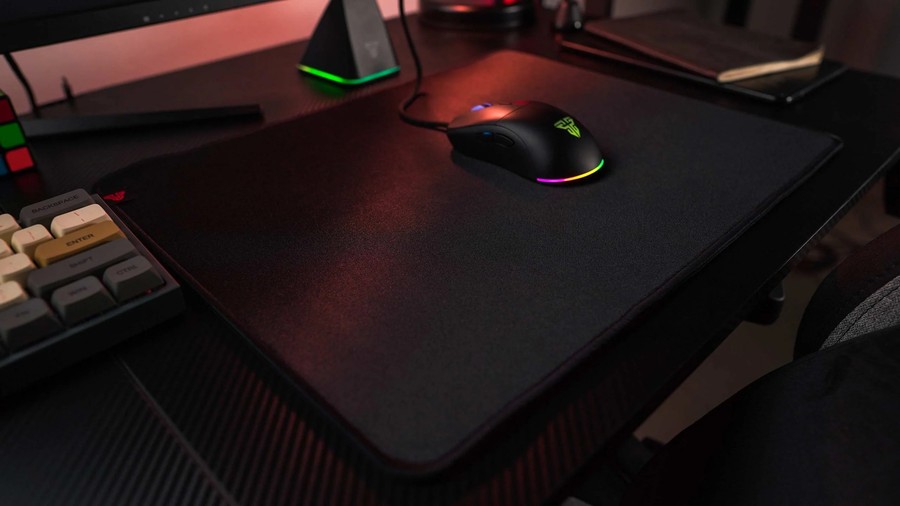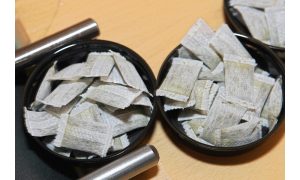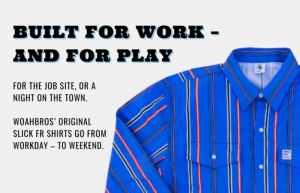Choosing the Right Mousepad: Size, Surface, and Features That Matter

In the world of computing and gaming, a mousepad is more than just a flat surface—it’s the foundation of precision, comfort, and control. Whether you’re a professional gamer aiming for pixel-perfect shots or an office worker who spends hours moving the cursor, choosing the right mousepad can greatly improve your performance and comfort.
With so many sizes, materials, and features available, the question becomes: how do you choose the best mousepad for your needs? This guide breaks down everything you need to know—size options, surface materials, additional features, and maintenance tips—so you can make an informed choice.
Why the Right Mousepad Matters
Many people underestimate the importance of a mousepad, but the right one can make a noticeable difference in:
- Precision: Ensures accurate tracking for both optical and laser mice.
- Comfort: Reduces wrist strain during long sessions.
- Durability: Extends the life of your mouse feet by minimizing friction damage.
- Speed & Control: Improves cursor glide for better efficiency in games or work tasks.
For competitive gamers, a high-quality mousepad can mean the difference between winning and losing. For office professionals, it can help maintain consistent productivity and prevent wrist fatigue.
1. Choosing the Right Size Mousepad
Mousepads come in various sizes, from compact squares to oversized desk mats. The size you choose depends on your desk space, mouse sensitivity settings (DPI), and personal comfort.
Small Mousepads
- Dimensions: Around 250 x 210 mm (10 x 8 inches)
- Best For: High-DPI users, office work, and portable setups.
- Pros: Saves desk space, lightweight, easy to carry.
- Cons: Limited range of movement for low-DPI gaming.
Medium Mousepads
- Dimensions: Around 350 x 260 mm (14 x 10 inches)
- Best For: General use and casual gaming.
- Pros: Balanced size for most users, versatile.
- Cons: Not ideal for ultra-low DPI gamers.
Large Mousepads
- Dimensions: Around 450 x 400 mm (18 x 16 inches)
- Best For: Low-DPI gamers who need wide sweeps.
- Pros: Ample room for precise aiming in FPS games.
- Cons: Requires more desk space.
Extended Desk Mats
- Dimensions: Around 900 x 400 mm (35 x 16 inches) or larger
- Best For: Covering entire desk space under both keyboard and mouse.
- Pros: Provides a uniform surface, protects desk, enhances aesthetics.
- Cons: Takes up significant space, harder to clean.
💡 Tip: If you’re a gamer who uses low DPI settings, choose a large or extended mousepad for smoother, unrestricted movement.
2. Surface Types: Speed vs. Control
The surface texture of your mousepad affects tracking, speed, and precision. Generally, mousepads fall into soft (cloth) and hard (plastic, metal, or glass) categories.
Cloth Mousepads
- Feel: Soft and comfortable, with a bit of cushion.
- Speed: Moderate—offers a balance between glide and control.
- Durability: Prone to wear but easy to roll up and carry.
- Best For: Long gaming sessions, general office work.
- Pros: Comfortable on wrists, quiet mouse movement.
- Cons: Absorbs dust and spills easily, needs frequent cleaning.
Hard Mousepads
- Feel: Smooth, rigid surface.
- Speed: High—allows the mouse to glide faster.
- Durability: More resistant to wear, but can be noisier.
- Best For: Competitive gaming requiring quick flick shots.
- Pros: Easy to clean, consistent performance.
- Cons: Less comfortable for wrists over time.
Hybrid Mousepads
- Feel: Combines cloth comfort with hard pad speed.
- Best For: Users who want both control and speed in one pad.
- Pros: Versatile performance.
- Cons: More expensive than single-material pads.
3. Mousepad Thickness and Cushioning
Mousepads also vary in thickness, which can affect comfort and feel.
- Thin (2-3mm): Firm feel, closer to desk surface, easier for fast glides.
- Medium (3-5mm): Balanced comfort and stability.
- Thick (5mm+): Softer, better for uneven desk surfaces, more wrist comfort.
If you suffer from wrist strain, opt for a thicker mousepad or one with a built-in wrist rest.
4. Must-Have Features to Look For
When selecting a mousepad, certain features can enhance performance and longevity.
Non-Slip Base
- Prevents the mousepad from shifting during use.
- Look for rubberized bottoms for better grip.
Stitched Edges
- Prevent fraying, which extends the pad’s lifespan.
- Particularly important for cloth mousepads.
Water Resistance
- Protects against spills and makes cleaning easier.
- Ideal for gamers or office workers who keep drinks nearby.
RGB Lighting
- Adds aesthetic appeal, especially for gaming setups.
- Some even allow customizable effects synced with games.
Wrist Support
- Provides ergonomic cushioning for long hours of use.
- Can help reduce strain and prevent carpal tunnel syndrome.
5. Choosing a Mousepad for Different Uses
Different activities require different mousepad characteristics.
For Gaming
- Best Choice: Large, smooth-surfaced mousepad for wide range of motion.
- Features to Prioritize: Low-friction surface, non-slip base, stitched edges, possibly RGB for aesthetics.
For Office Work
- Best Choice: Medium-sized cloth pad with wrist support.
- Features to Prioritize: Comfort, durability, easy cleaning.
For Travel
- Best Choice: Thin, foldable cloth mousepad.
- Features to Prioritize: Lightweight, portable, non-slip grip.
6. Maintenance and Cleaning Tips
Proper care extends your mousepad’s lifespan and performance.
- Cloth Pads: Hand wash with mild soap, rinse thoroughly, and air dry.
- Hard Pads: Wipe with a damp cloth and mild cleaner.
- Avoid: Harsh chemicals, machine washing (unless specified by manufacturer).
💡 Tip: Clean your mousepad every 1–2 months to maintain smooth tracking and hygiene.
7. Common Mistakes When Buying a Mousepad
- Choosing by Looks Alone: A stylish pad isn’t always the most functional.
- Ignoring Desk Size: Oversized pads won’t fit small desks.
- Skipping Comfort Features: Wrist strain can become a serious issue.
- Not Considering Mouse Type: Some surfaces work better with optical or laser sensors.
Conclusion
Choosing the right mousepad isn’t just about picking a random mat—it’s about matching size, surface, and features to your needs. A good mousepad improves precision, comfort, and durability, making your work or gaming experience smoother and more enjoyable.
Whether you’re a competitive gamer needing a large, low-friction pad or an office worker looking for ergonomic wrist support, the perfect mousepad is out there. Invest wisely, maintain it well, and your mouse will thank you for it.
FAQs
Q1: Do I really need a mousepad?
Yes—while modern mice can work without them, mousepads provide smoother tracking, protect desk surfaces, and enhance comfort.
Q2: Are RGB mousepads worth it?
Only if you value aesthetics or want a coordinated gaming setup—they don’t improve performance.
Q3: How often should I replace my mousepad?
If you notice fraying edges, uneven surfaces, or reduced glide, it’s time for a replacement—typically every 1–3 years.
Q4: Can I use a mousepad with any mouse?
Yes, but some surfaces perform better with specific sensor types. Optical mice usually work best on cloth, while laser mice perform well on hard surfaces.




